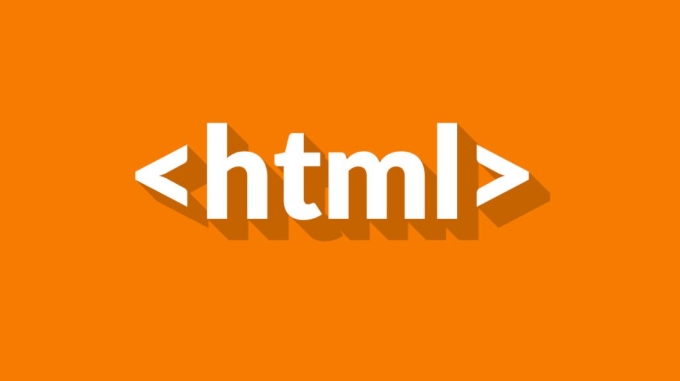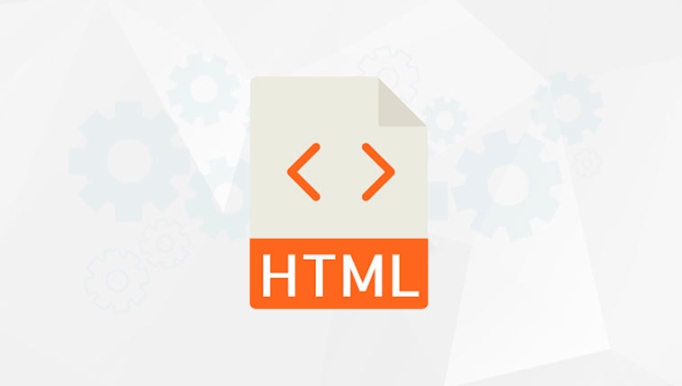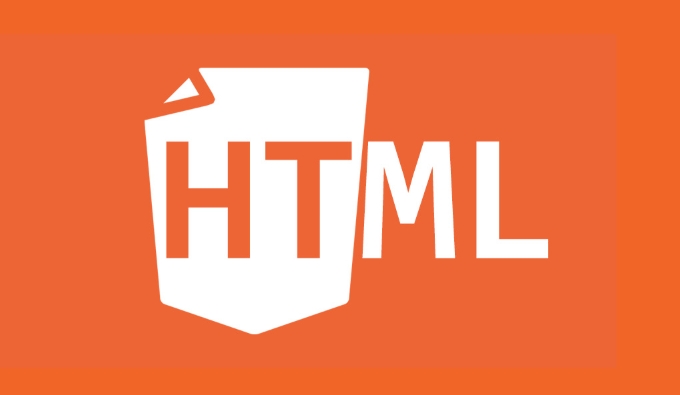The link preview problem is usually caused by not setting up Open Graph Meta Tags correctly. Open Graph Meta Tags is a standard meta tag proposed by Facebook, which is used to define the title, pictures, description and other information of web pages when sharing on social platforms. Common tags include: 1. og:title: link title; 2. og:description: short description; 3. og:image: display pictures; 4. og:url: page address; 5. og:type: page type; 6. og:site_name: website name. To add OG tags, you need to write to the
part of the HTML, and it is recommended to use absolute path pictures, control the description length, and increase the extended attributes. Things to note on each platform are: Facebook can be debugged with Sharing Debugger; X supports twitter:* tag; LinkedIn has strict requirements on image size; WeChat/QQ built-in browsers require multiple tests. Dynamic pages can dynamically generate OG tag content through CMS or frameworks such as WordPress and Next.js. Configuring the OG tag can improve the content attractiveness and click-through rate on social platforms.
When posting content to social platforms, have you ever encountered situations where the link preview does not display pictures, the title is confusing, or the description is inexplicable? The problem is most likely that the Open Graph Meta Tags is not set up properly. Don't underestimate these tags, they determine the display effect of your web page when it is shared on Facebook, X (formerly Twitter), LinkedIn and other platforms.

What are Open Graph Meta Tags?
Open Graph is a set of standard meta tags proposed by Facebook to tell social platforms: what title, picture, description, and URL should be displayed when someone shares this web page.
Simply put, it is the key technology behind the "card" link preview you see on social platforms.

Common OG tags include:
-
og:title: link title -
og:description: a brief description -
og:image: The image to be displayed -
og:url: The standard page address -
og:type: page type (such as article, website) -
og:site_name: website name
If you do not set these tags manually, the platform will crawl the page content by itself, and the results are often not ideal.

How to add Open Graph Meta Tags correctly?
OG tags are usually written in the section of the HTML page. Here is a basic example:
<meta property="og:title" content="Article Title"> <meta property="og:description" content="This is a brief description of the article"> <meta property="og:image" content="https://example.com/image.jpg"> <meta property="og:url" content="https://example.com/article123"> <meta property="og:type" content="article"> <meta property="og:site_name" content="My Blog">
Some practical suggestions:
- The image is best to use absolute paths, and the size is recommended to be at least 1200x630 pixels, so that it can be clearly displayed on both the mobile and desktop.
- The description should not be too long, and be controlled within 2 to 3 lines to avoid being truncated.
- If it is an article class page, you can add an extended attribute such as
article:authororarticle:published_time.
What are the special things to pay attention to on different platforms?
Although most platforms support Open Graph, some platforms have special requirements or restrictions:
- Facebook : It has its own debugging tool, Sharing Debugger , which can force refresh the cache and view OG effects.
- X (formerly Twitter) : In addition to OG tags, it also supports its own
twitter:*tags, such astwitter:cardandtwitter:site. If you want to customize the display style on X, it is recommended to set them together. - LinkedIn : The size of the image is relatively strict, and it is recommended to use a ratio of 1200x627.
- WeChat/QQ built-in browser : Some domestic app internal browsers may not respect OG tags very much and require more testing.
If you are mainly aimed at Chinese users, don’t forget to configure meta tags supported by Weibo or other domestic platforms at the same time, such as some custom fields of Baidu Xiongzhang.
How to deal with dynamic pages?
If your website is a CMS or dynamically generated page (such as WordPress, React SSR page), you cannot write the OG tag directly, and you must dynamically insert the correct value according to the current page.
For example, in WordPress, you can dynamically output titles and descriptions like this:
<meta property="og:title" content="<?php the_title(); ?>"> <meta property="og:description" content="<?php echo get_the_excerpt(); ?>">
If it is a server-side rendering framework such as React Next.js, you can use next/head component to dynamically inject the corresponding meta tags.
In short, the key is to automatically fill the corresponding OG data according to the content of different pages.
Basically that's it. Setting up OG tags is not complicated, but they are easily overlooked. Taking a few minutes to configure it can greatly improve the attractiveness and click-through rate of your content on social platforms.
The above is the detailed content of Open Graph Meta Tags for Social Media Sharing. For more information, please follow other related articles on the PHP Chinese website!

Hot AI Tools

Undress AI Tool
Undress images for free

Undresser.AI Undress
AI-powered app for creating realistic nude photos

AI Clothes Remover
Online AI tool for removing clothes from photos.

Clothoff.io
AI clothes remover

Video Face Swap
Swap faces in any video effortlessly with our completely free AI face swap tool!

Hot Article

Hot Tools

Notepad++7.3.1
Easy-to-use and free code editor

SublimeText3 Chinese version
Chinese version, very easy to use

Zend Studio 13.0.1
Powerful PHP integrated development environment

Dreamweaver CS6
Visual web development tools

SublimeText3 Mac version
God-level code editing software (SublimeText3)
 Applying Semantic Structure with article, section, and aside in HTML
Jul 05, 2025 am 02:03 AM
Applying Semantic Structure with article, section, and aside in HTML
Jul 05, 2025 am 02:03 AM
The rational use of semantic tags in HTML can improve page structure clarity, accessibility and SEO effects. 1. Used for independent content blocks, such as blog posts or comments, it must be self-contained; 2. Used for classification related content, usually including titles, and is suitable for different modules of the page; 3. Used for auxiliary information related to the main content but not core, such as sidebar recommendations or author profiles. In actual development, labels should be combined and other, avoid excessive nesting, keep the structure simple, and verify the rationality of the structure through developer tools.
 Implementing Clickable Buttons Using the HTML button Element
Jul 07, 2025 am 02:31 AM
Implementing Clickable Buttons Using the HTML button Element
Jul 07, 2025 am 02:31 AM
To use HTML button elements to achieve clickable buttons, you must first master its basic usage and common precautions. 1. Create buttons with tags and define behaviors through type attributes (such as button, submit, reset), which is submitted by default; 2. Add interactive functions through JavaScript, which can be written inline or bind event listeners through ID to improve maintenance; 3. Use CSS to customize styles, including background color, border, rounded corners and hover/active status effects to enhance user experience; 4. Pay attention to common problems: make sure that the disabled attribute is not enabled, JS events are correctly bound, layout occlusion, and use the help of developer tools to troubleshoot exceptions. Master this
 Configuring Document Metadata Within the HTML head Element
Jul 09, 2025 am 02:30 AM
Configuring Document Metadata Within the HTML head Element
Jul 09, 2025 am 02:30 AM
Metadata in HTMLhead is crucial for SEO, social sharing, and browser behavior. 1. Set the page title and description, use and keep it concise and unique; 2. Add OpenGraph and Twitter card information to optimize social sharing effects, pay attention to the image size and use debugging tools to test; 3. Define the character set and viewport settings to ensure multi-language support is adapted to the mobile terminal; 4. Optional tags such as author copyright, robots control and canonical prevent duplicate content should also be configured reasonably.
 Best HTML tutorial for beginners in 2025
Jul 08, 2025 am 12:25 AM
Best HTML tutorial for beginners in 2025
Jul 08, 2025 am 12:25 AM
TolearnHTMLin2025,chooseatutorialthatbalanceshands-onpracticewithmodernstandardsandintegratesCSSandJavaScriptbasics.1.Prioritizehands-onlearningwithstep-by-stepprojectslikebuildingapersonalprofileorbloglayout.2.EnsureitcoversmodernHTMLelementssuchas,
 HTML for email templates tutorial
Jul 10, 2025 pm 02:01 PM
HTML for email templates tutorial
Jul 10, 2025 pm 02:01 PM
How to make HTML mail templates with good compatibility? First, you need to build a structure with tables to avoid using div flex or grid layout; secondly, all styles must be inlined and cannot rely on external CSS; then the picture should be added with alt description and use a public URL, and the buttons should be simulated with a table or td with background color; finally, you must test and adjust the details on multiple clients.
 How to associate captions with images or media using the html figure and figcaption elements?
Jul 07, 2025 am 02:30 AM
How to associate captions with images or media using the html figure and figcaption elements?
Jul 07, 2025 am 02:30 AM
Using HTML sums allows for intuitive and semantic clarity to add caption text to images or media. 1. Used to wrap independent media content, such as pictures, videos or code blocks; 2. It is placed as its explanatory text, and can be located above or below the media; 3. They not only improve the clarity of the page structure, but also enhance accessibility and SEO effect; 4. When using it, you should pay attention to avoid abuse, and apply to content that needs to be emphasized and accompanied by description, rather than ordinary decorative pictures; 5. The alt attribute that cannot be ignored, which is different from figcaption; 6. The figcaption is flexible and can be placed at the top or bottom of the figure as needed. Using these two tags correctly helps to build semantic and easy to understand web content.
 What are the most commonly used global attributes in html?
Jul 10, 2025 am 10:58 AM
What are the most commonly used global attributes in html?
Jul 10, 2025 am 10:58 AM
class, id, style, data-, and title are the most commonly used global attributes in HTML. class is used to specify one or more class names to facilitate style setting and JavaScript operations; id provides unique identifiers for elements, suitable for anchor jumps and JavaScript control; style allows for inline styles to be added, suitable for temporary debugging but not recommended for large-scale use; data-properties are used to store custom data, which is convenient for front-end and back-end interaction; title is used to add mouseover prompts, but its style and behavior are limited by the browser. Reasonable selection of these attributes can improve development efficiency and user experience.
 How to handle forms submission in HTML without a server?
Jul 09, 2025 am 01:14 AM
How to handle forms submission in HTML without a server?
Jul 09, 2025 am 01:14 AM
When there is no backend server, HTML form submission can still be processed through front-end technology or third-party services. Specific methods include: 1. Use JavaScript to intercept form submissions to achieve input verification and user feedback, but the data will not be persisted; 2. Use third-party serverless form services such as Formspree to collect data and provide email notification and redirection functions; 3. Use localStorage to store temporary client data, which is suitable for saving user preferences or managing single-page application status, but is not suitable for long-term storage of sensitive information.






